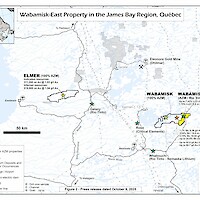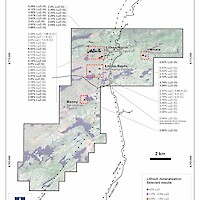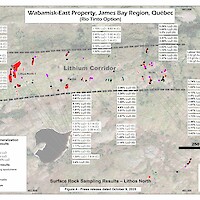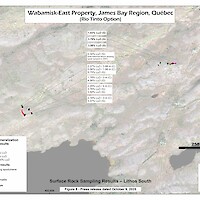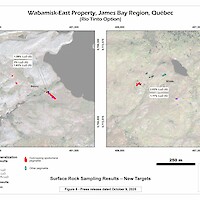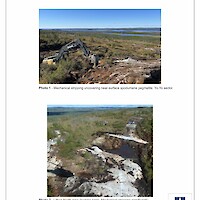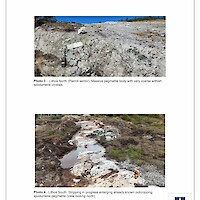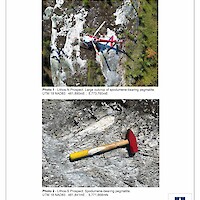Introduction
The newly formed Wabamisk East property corresponds to the eastern part of Azimut’s wholly owned Wabamisk property and is located 42 km northeast of the Whabouchi property (Nemaska Lithium Inc.). Major powerlines pass through or close to the property's eastern end, and the North Road highway passes 37 km to the south. The nearest town is Nemaska, a Cree community, 55 km to the southeast.
Azimut initially acquired the claims by map designation in 2005 following its James Bay-scale predictive modelling for gold. Wabamisk was optioned to Placer Dome in 2005 before it was transferred to Goldcorp Inc. which was then acquired by Newmont. In 2022, Azimut announced that it regained 100% ownership of the project (PR of August 8, 2022).
Since regaining full control of the Property, Azimut reprocessed the property’s large database to rank exploration targets. The 2024 prospecting program revealed an antimony-rich system but also a strong potential for lithium, with an extensive spodumene pegmatite field identified.
In July 2025, it announced that it revised its agreements (the "Revised Agreement") with Rio Tinto Exploration Canada Inc ("Rio Tinto") to consolidate the previous agreements and to cover three properties – Corvet, Kaanaayaa and Wabamisk East (together the “CKW Properties”) (PR of July 24, 2025).
Under the first phase of the Revised Agreement, Rio Tinto can acquire an initial 50% interest before December 31, 2028 in the CKW Properties from Azimut by:
- funding $25 million in exploration expenditures (approximately $1.85 million already incurred)
- making cash payments totalling $1.7 million ($800,000 already paid).
Azimut will remain the operator during this phase.
Under the second option phase, Rio Tinto can earn an additional 20% interest over the following 5 years with further work expenditures of $60 million. Rio Tinto will act as the operator during this phase. Azimut retains the right to be funded to the production stage by way of a secured loan from Rio Tinto by granting Rio Tinto an additional 5% interest in the CKW Properties (for a total interest of 75%).

